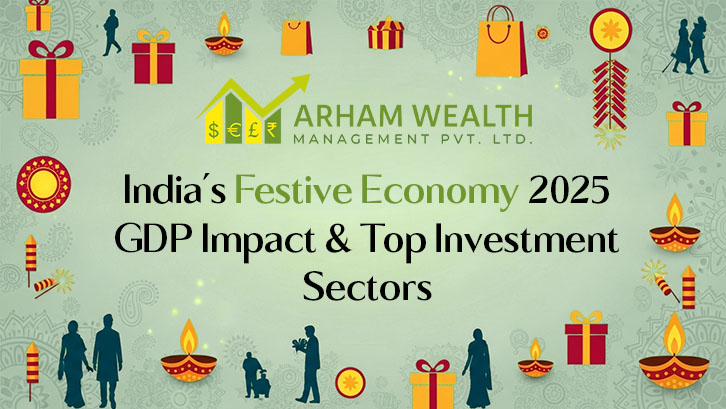


India’s festival season has long been more than cultural celebration — it’s a powerful engine of economic activity. As households light lamps and plan weddings, their spending ripples through retail, digital payments, credit, logistics, and more. In 2025, multiple tailwinds — from GST cuts to digital infrastructure penetration — point to an especially strong festive consumption wave.
According to a Bank of Baroda report, consumer spending during the 2025 festive + marriage season is expected to be Rs. 12 lakh crore to Rs. 14 lakh crore, excluding day-to-day FMCG consumption. The wedding segment alone is projected to contribute Rs. 4.5 lakh crore to Rs. 5 lakh crore.
In this blog, we’ll explore:
The economic significance of India’s festive cycle in 2025
Key sectors poised to benefit — and investment plays to consider
Shifts in consumer behavior during festivals
Strategic insights and calls to action for investors
Below are major sectors that typically dominate festival-era consumption — with notes on investment plays and risks.
Lower taxes on small cars and attractive EMI/finance offers translate directly into higher showroom traffic and conversions. Automakers often run festival-specific price campaigns and extended warranty/finance bundles that push demand forward. Reuters and several market outlets flagged auto as an early winner in 2025 thanks to tax shifts and manufacturer price moves. For investors, auto OEMs and select component suppliers merit attention during a festive uplift — but watch inventory days and channel restocking, which can create later headwinds.
TVs, refrigerators, washers, and smartphones are perennial festive buys, often spurred by platform-led sales on e-commerce and in-store EMI offers. Reports from e-commerce trackers and industry bodies show double-digit festive uplift for premium electronics in 2025, benefiting both large-format retailers and listed electronic brands. E-commerce platforms also reported strong festival traffic and higher ticket-size across select categories.
Clothing is a festival staple — and in 2025 multiple outlets noted strong demand for apparel across tier-1 and tier-2 cities. Lower GST for some price bands and wedding-related purchases (a big seasonal driver) further add to demand. This helps organized retail, large brands, and certain textile clusters that still cater to local festival orders.
Gold and jewellery spikes have long been tied to auspicious dates. Even when prices are elevated, the cultural imperative — weddings, gifts, family purchases — keeps the category resilient. Retail jewellers, NBFCs offering gold loans, and listed refiners or jewellery chains are typical beneficiaries. Several regional reports in 2025 reported steady jewellery sales despite price volatility.
Online platforms convert festive intent into sales via deep discounts, flash deals and financing tie-ups. Festive campaigns lift new customer acquisition and basket sizes — a one-two punch for platform revenues. IBEF and industry trackers flagged sizeable festive uplifts for online channels in 2025. For investors, this means both marketplace operators and logistics/warehousing providers see tailwinds.
Sweets, packaged gifts, and FMCG staples see volume bumps during festivals. MSMEs and local manufacturers also profit, and the surge helps channel inventory turnover. Analysts noted that while some FMCG categories are excluded from headline BoB estimates (which focused on discretionary items), the category’s cumulative impact on rural and urban demand is still material.
1. Digital Payments Dominate
2. Tier-II / III / Non-Metro Consumption Rise
3. Credit & BNPL Activation
4. Premiumization & Conscious Consumption
5. Time-Shifting of Purchase Behavior
The 2025 festive cycle reaffirms India’s strength as a consumption-led economy. With spending estimated between ?12–14 lakh crore, festivals continue to act as a catalyst for GDP growth and investor confidence. The opportunity, however, goes beyond immediate sales — it lies in the ecosystem that fuels this demand. Payments, logistics, fintech, and digital infrastructure firms are quietly powering India’s festive surge and merit long-term attention.
For investors, the key is balance — pairing short-term festive plays like electronics and automobiles with stable sectors such as FMCG and branded food. Tier-II and Tier-III markets are now leading consumption growth, offering deeper, more sustainable exposure.
As India’s celebrations translate into economic momentum, this season becomes an opportune time to align your investments with that growth. Partnering with Arham Wealth can help you capture these opportunities through smart portfolio design and seamless Demat account access — turning the spirit of festivity into a step toward financial freedom.